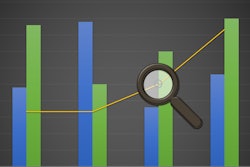
It’s been said, the only thing constant, is change. It couldn’t be more true in Agribusiness. The pace of mergers & acquisitions has increased for both agribusiness and our customers. As this happens, it becomes difficult to keep track of customers and the products & services they use. In addition, grain and livestock producers are holding us to a higher standard when it comes to managing their information. As their business and ours become more complex, customers no longer want to repeat or reenter information. To be effective, our products, services and employees need to be coordinating and working in synch.
Otherwise, your customer might say: “Why doesn’t the sales coordinator know my product preferences? I gave that to my sales person last week!” “Why doesn’t the accounts receivables collection person know that I gave a check to the sales person yesterday? That’s what the sales coordinator told me to do!” “Why does the sales person call on me if I have to repeat it all to her office or plant?” Customers expect us to make it easier for them to conduct business with us.
As we merge & consolidate, customers and the administration of their accounts often change. Economies of scale may allow for your credit processing to be done in a new or consolidated location. You might give up a few of your customers and gain a few from a new sales person on your team. Let me ask, is it faster for that person to go into their home filing cabinet, pull out manual records and send them to you? Or simply, give you access to this customer’s CRM file that is backed up online?
In Part 1, we covered a few of the components about CRM you might not like. Today, we cover those components you love about CRM that helps you become better, faster and more organized for your customers.
Why We Love CRM?
One Source: All information in one place
There’s no multiple files, multiple locations nor multiple people to talk to. All account information is in one place and can be accessed by anyone in your company.
Worried about IT security or confidentiality issues? No worries. These programs can compartmentalize info for an as-needed access for each user in your company. Two critical components to actually realize this advantage:
- Everyone has to use it and enter information to make it effective.
- Accounting software has to be connected and feed data into the CRM program.
Dashboards: Ability to cross reference information
This is one of the greatest features of the CRM programs for the sales person and their manager. Dashboards allow you to compare and monitor customer, product and sales results that would take too long to process manually. With your accounting program feeding info into CRM, you can now easily sort data into dashboard style pages for quick snapshots. This allows you to stay current on Key Performance Indicators (KPI’s). If a KPI falls outside of parameters, you can quickly dial down into the data to uncover what might be causing this. I admit that I was a spreadsheet junky and poured over large accounting reports for many years. I prided myself on knowing the ins and outs of how to read these reports. Then CRM came along and made it faster and easier with more current statistics. It gave me the ability to connect and sort data that was nearly impossible without CRM.
Automated: forget less – follow-up more
Even if you have one of the most elaborate methods of managing your schedule of calls, meetings and follow-up activities, you can always use a backup method. However, if you are like the majority of us, your home-made territory management methods are lacking and you often drop the ball on coordinating your schedule. Properly used, CRM gives us the ability to not only keep better control of our schedule, but also we can include other teammates in the management of the account. These programs allow you to “Tag” or “Copy” or “Inform” others on the team. You may even enjoy the ability to “Assign a Task”. So, impress your customer with your ability to forget less, personally follow up more and involve the whole team in the account. It might just be the differentiator you are looking for with a customer.
Summary:
When launching a new CRM program, we often promote the positives of the program and downplay the negatives. I think that’s a mistake. Our customer-facing
employees then go out to implement the program and find the launch period to be daunting, information isn’t loaded in yet and they don’t feel comfortable with the validity of the data that is in the program. Keep the vision of what CRM has to offer and how valuable it will be as a resource for everyone, not just managers. Keep promoting the vision of how CRM will give your team a competitive advantage. Help everyone understand the learning cycle on the program.
- Data will be loaded and accurate eventually
- Customer info will be accessible
- Dashboards will make customer management better, faster, easier
Join me next time as I go through best practices on launching your new CRM and implementing a program everyone can benefit from.












